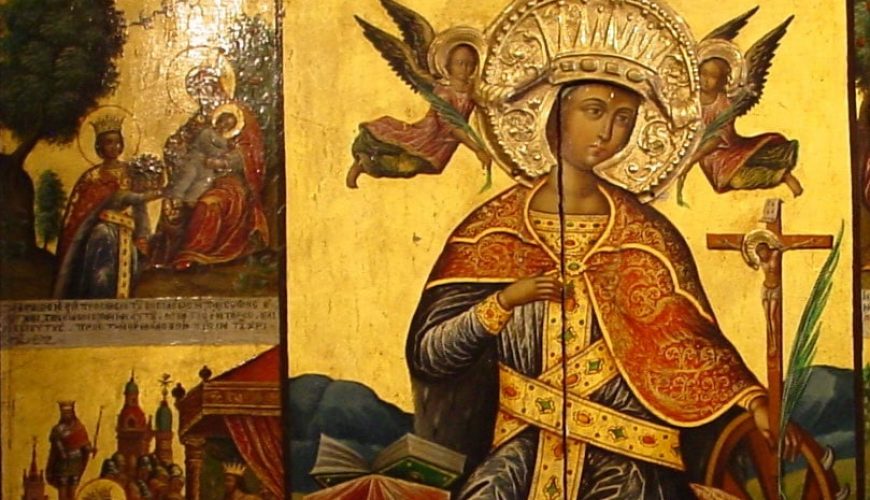Coptic monasticism and its cultural and artistic role in Europe
The emergence of monasticism in Egypt is considered one of the most important manifestations of Christian life and the best expression of the spirit that dominated it. Monasticism began at the hands of St. Anthony at the beginning of the 4th century AD. As for St. Pachomius, he founded his first monastery in the year (318 AD), and monasticism had a strong and extended impact in its early ages on Christian thought. The Christianity of the West, in particular, is what has given Christianity in the West its central nature as an institution to this day.
Egypt attracted many church leaders in the East and West to study the Bible and theology at the School of Alexandria from the first centuries. During this opening, Coptic art indirectly spread to all parts of the world, so Coptic art had to be present to perform religious rituals, so we find the influence of Coptic art on the entire Roman Empire. Rather, it extended to the outside through the Coptic textiles that were exported to them, and that one of the most important things that were affected by the West from the East is the Coptic monastic system that was unique to Egypt. The individual can prove the reality of those influences if he is satisfied with the thought of Coptic topics’ relationship with topics treated in the same way, such as the Virgin who Breastfeeding the child, the Saint Knight. The frescoes of the ascent are all taken from Coptic art, which he drew from ancient Egyptian art as an extension of his heritage.
The Coptic Church attracted attention through monasticism, where visitors and pilgrims from all over the Christian world came to Egypt to learn the origins of monasticism and its various systems. Then they established a monastery in Marseilles. They followed all the rules of Egyptian monasticism and translated many of the teachings and laws of the Egyptian fathers in various fields of religious life. 4 AD and Saint Eusebius of Italy, who, after returning to his country, established monasteries in the Coptic style. Of course, these monasteries did not include only monks from the sons of Egypt but also expanded to all the children of the Christian world who rushed to participate in the life of asceticism and piety. The Coptic monasteries included many Greeks and Romans. And the Libyans, the Syriacs, the Ethiopians, and many from different countries and races, and with time the monasteries multiplied rapidly and exceeded the borders of Egypt And Africa, for it attracted to it a large number of people from Europe, Asia and Africa, who became the best mediator for the transmission of the Coptic monastic system and its introduction throughout the Christian world. Italy spent a period focusing on asceticism and piety. It contributed to the transfer of the monastic model to their country through written studies, such as (Historia Monachorum In Egypt) written by Rufinus.
In the 5th century AD, many Coptic monks went to Ireland when one of the sons of the King of Ireland was ill with an incurable disease. When he heard about the miracles of healing from the lake of water next to the body of Marmina in his monastery, which was famous all over the world, he came to this monastery and was cured and took many monks with him. From the Monastery of Muharraq and the Monastery of Marmina to Ireland, where they preached Christianity and spread the Coptic civilization there, through the early Coptic monks in the 5th century AD. Coptic arts and icons influenced Irish arts, and the shape of the Irish cross was similar to the shape of the Coptic cross. Also, the letters of the ancient Irish language were affected by the Coptic language letters and even the colours of decoration. The methods of scribes in Ireland in the old days are the Coptic colours, which are yellow, red and green, and the inscriptions on metal, wood and cloth used in the Church are taken from Coptic art.
So, the relationship between Coptic and Irish art seems more clear in this regard because the movement of the influence of the whole West on Coptic art has been transmitted to them through ascetic writings. Exactly with the nature of England and Ireland because they were Berbers who lived based on heroism and the idea of a hermit is the same as the idea of a hero who resists evil in his body, and these factors and others interacted to make the Irish and the English more receptive than others to the Egyptian monasticism. However, later the Irish and English Church entered under the influence of Roman, but it was The Coptic influence is still present for several years. With all this influence and convergence between the arts, we can imagine that the Coptic monks gifted artworks from their country when they visited Ireland. However, some say that they taught them these arts and provided them with the secrets of technology, and this is evidence of the extent of the influence of Coptic art on the Irish, which in turn He was influential in Western art when Irish monks began to spread Christianity on the European continent.
From Ireland, Coptic monks or their Irish students went from Ireland to Switzerland and Germany, where they founded the old city of Munich and Belgium. As a result of these cultural channels between Egypt and Europe, Christian customs spread in Europe, such as the Sham El-Nessim egg, which is of Pharaonic origin, which was associated with the resurrection of the Copts. Saint Athanasius the Apostolic spread monasticism in Europe during his exile outside Egypt, and during his exile in France, he wrote a lot about the life of Egyptian monasticism, especially his great book on the life of Saint Anthony and was a student of his


Comment (0)